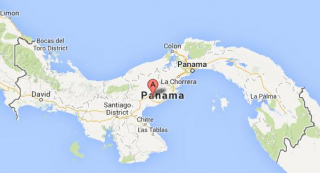La Ermita, Panama
![]()
![]()
![]()
![]()
![]()
![]()
![]() Click on Programs to learn more about their work in this community
Click on Programs to learn more about their work in this community
General Information

| Population* | 1500 |
| Number of homes | 300 |
| Avg # of people per home | 5 |
| Electricity | In some houses but not all |
| Corregimiento | |
| District | Penonome |
| Corresponding Health Center | Yes, but sometimes there is no doctor present |
| Distance from compounds | 45 minutes |
| Road conditions | Paved roads |
* Population does not reflect how many patients will be seen on medical
brigades.
Expressed Needs and Capacities
The community has expressed several strengths. There are a few stores and kiosks in La Ermita. Additionally, many community members work in agriculture: they grow several kinds of plants and raise cattle to produce dairy products. The community has also expressed a desire to work with the government to improve road conditions and sanitation services as well as to help bring eletricity to families that have none.
The community of La Ermita has one primary school that attends to children from kindergarten to grade 6. At the school, a team of 9 teachers educates approximately 172 students. The school has 8 classrooms, a kitchen, a cafeteria, a staff room, and a computer lab. The nearest secondary school is in Higo, which is about 20 minutes away.
The water system in La Ermita is a system of aqueducts that uses gravity to reach the houses. The system is maintained by a water committee, which has 7 members. The committee meets twice a month for meetings and also chlorinates the water twice a month. Community members who are connected to the water system pay $3.50 per month if they have a hygiene station at their home and $2.00 per month if they do not. Water reaches houses in certain areas and does not reach others. Furthermore, there are some areas that only has water two or three times a week.
There is a small clinic in La Ermita. However, there is not always a doctor at the clinic. Therefore, community members need to go to San Carlos when this occurs. The health center in San Carlos is about 20 minutes by bus from La Ermita, and a one-way ticket costs $0.80. The most common ailments are common colds, diabetes, and high blood pressure. La Ermita does not have a dental clinic, and community members largely rely on organizations like Global Brigades to receive dental care.
The community members of La Ermita work in different professions: many work in agriculture and in skilled and unskilled labour. Those who work in agriculture raise dairy cattle or grow crops such as corn, papaya, avocado, plaintains, and guandu (a local legume rich in protein). There are also a few local stores and kiosks in La Ermita. Currently, there is no access to credit in the community.
La Ermita has an environmental committee composed of 15 members. The local school has a plot of land which is approximately 1600 square meters. The Ministry of Social Development helped the community develop a garden on this land. Approximatly 25% of homes have tomato plants and/or garlic plants.
Currently, La Ermita does not have any type of recycling system available, and community members dispose of their garbage by burning it.
Every once in a while, an organization called Los Wayacanes helps with reforestation by planting trees in the area.
Community members can seek legal assistance through the town center in the Penonome District. Common legal conflicts are related to child support, visitation rights, and domestic violence. The community once hosted a workshop on domestic violence in the local school.
La Ermita has one governmental official, Diana Martinez, who represents the community in a local legislature.
La Ermita has one other organization working in the community: Los Wayacanes. This organization works to help reforest the area by planting trees.
La Ermita also has its own local committees working in the area including Asociación de Padres, a health committee, a catholic committee, and a water committee.
Global Brigades works in La Ermita with its Medical and Dental Programs.